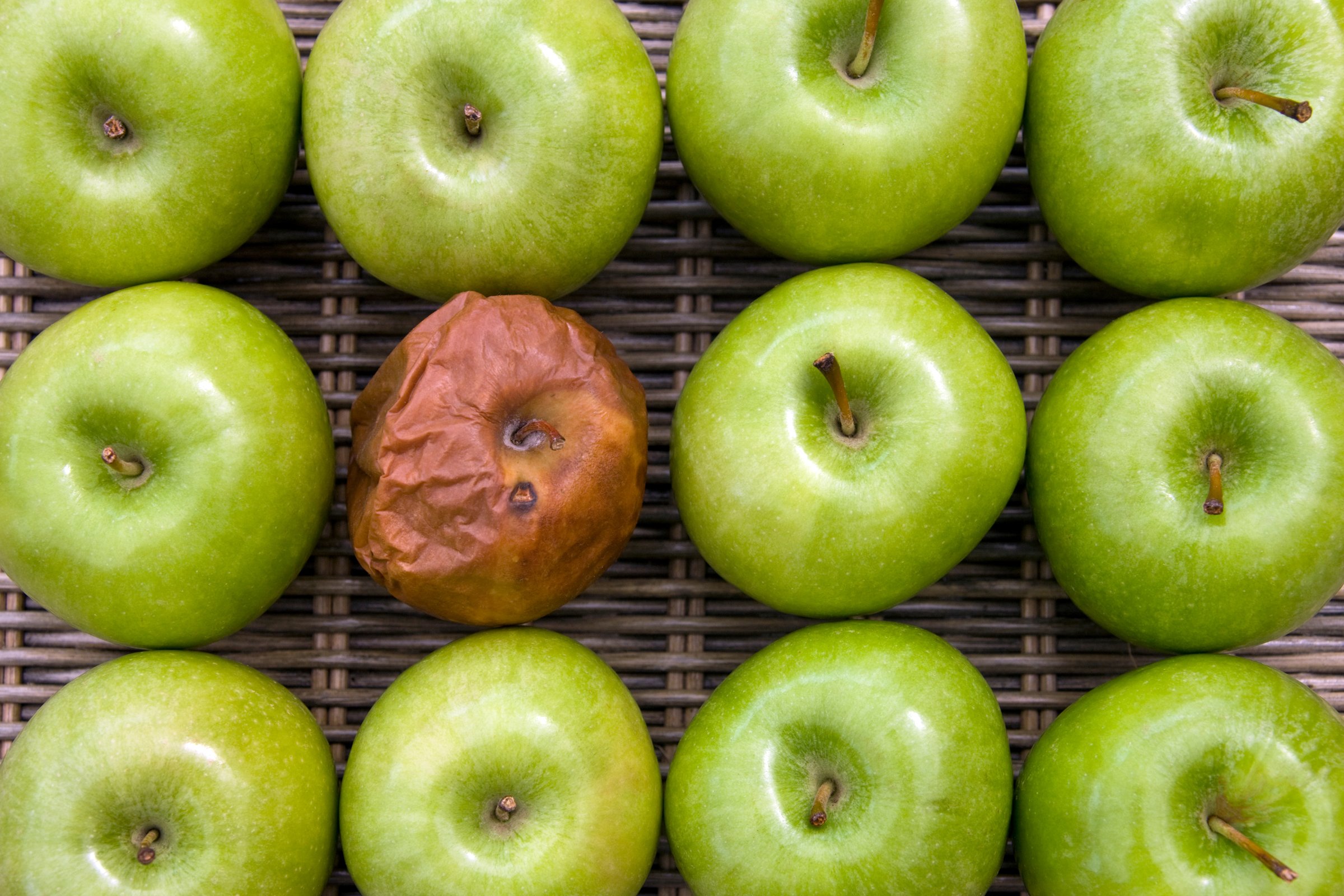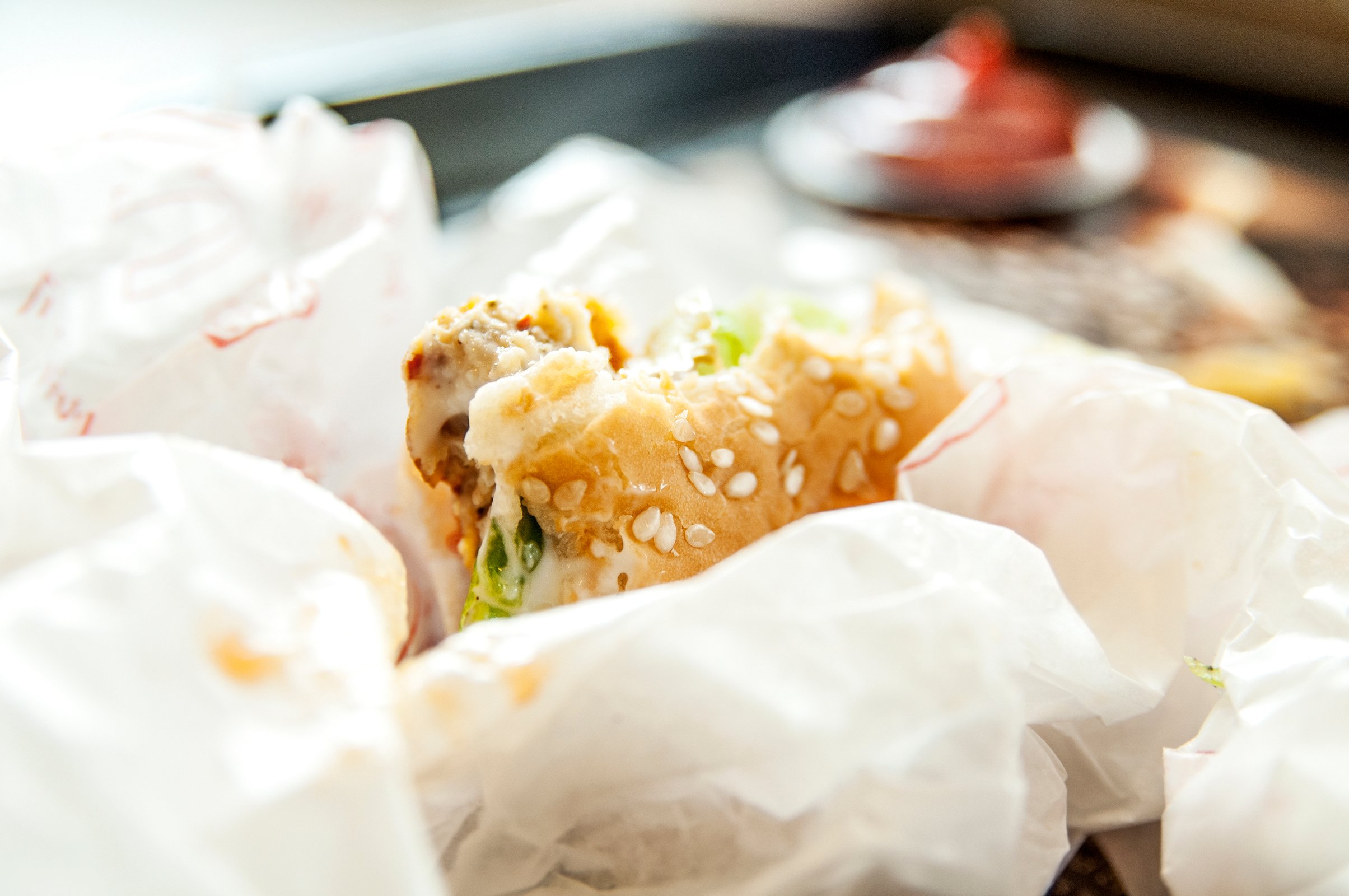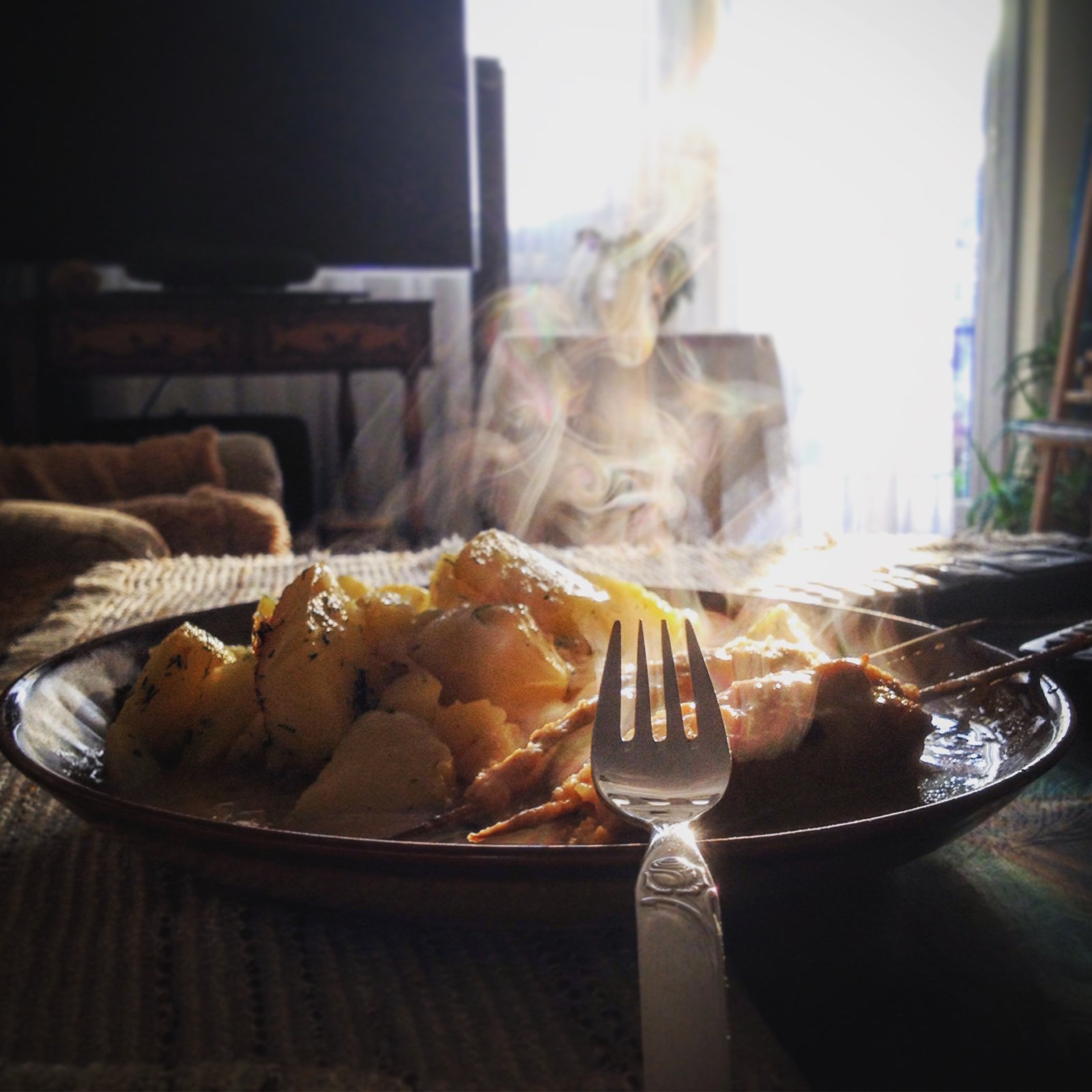By Yeo Chee Yew

There is this Mandarin proverb that roughly translates to “having an elderly in the family is like having a treasure in the house”. It does sound logical, at the very least. With age comes experience, and with experience comes a better understanding of how things work in this frantic world of ours.
Yet, when it comes to nutritional habits, the jury is still out on whether the old adage still holds true as more scientific research sheds light on how our body works. While some of these anecdotes aged like fine wine, others may not have passed as kindly through the passage of time.
In this article, we take a look at three common nutritional tropes espoused by our parents and/or grandparents and find out whether we should carry those into future generations. ***SPOILER*** We probably shouldn’t. This is why it would be in our favour to help our parents (or grandparents) break those habits to help them lead a better life.

The first revolves around the treatment of rotten fruit. In particular, one can just shave off the rotten part of the fruit and eat the rest. This trope was even a key concept of Jack Neo’s satirical comedy film (I Not Stupid Too), where it was used as an allegory to highlight the importance of not giving up on students who are deemed as “bad apples”.
While this practice may net you points on frugality, you are actually paying for it with your health. Confused? Let me explain. Fruits, with their high water content, allow for moulds and their microbial contents to spread easily through internal juices to the other parts of the fruit.
An investigation conducted by the Chinese Academy of Preventive Medicine found that, for a moulded apple, the content of patulin found in normal-looking sections can range from 10 to 50% of that of the mouldy parts!
Patulin is a heat-stable toxin produced by a number of different moulds such as Penicillium and Aspergillus. It can be found in damaged or mouldy fruits, particularly apples and grapes. It is capable of causing different health hazards, including nausea, lung congestion, epithelial cell degeneration, along with carcinogenic, genotoxic, immunosuppressive, and teratogenic effects.
So please, for your parents’ sake, throw away rotten fruits as soon as possible. If your parents are interested in gardening, however, they could turn them into fertilizer! There are quite a few ways to go about it, but make sure the rotten fruit they are using isn’t infected with diseases or pests.

The next trope would revolve around the frequent consumption of leftover food. Some people buy a rice or noodle dish at lunch, store it at room temperature for hours before reheating it for dinner. Or it could be when they realized that they’ve prepared too much for dinner and proceed to just chuck it into the fridge for future consumption. It could be hours or even days before that leftover food finally ends up in the stomach!
Turns out, you are not only feeding yourself when you consume leftover food. Air, saliva, or even a dirty fridge can aid in the proliferation of bacteria. Some of the scary bacteria include Listeria monocytogenes, Salmonella, E. coli, and the Staphylococcus aureus.
Bah, I’ve reheated it in the microwave. Heat = Safe, right? Right? Wrong*! "Warming the food doesn't kill the bacteria as the temperature isn't high enough and some toxins are heat-stable," said Dr Leong Hoe Nam, an infectious disease specialist at Mount Elizabeth Novena Hospital. "Under harsh (read as cooking) conditions, they form spores, which cannot be destroyed. You can flame it, but you can't cook it. This is before even mentioning that, depending on the packing of the food, there may be uneven heating, where the center of the food isn’t heated properly!
Even refrigeration isn’t enough to ensure the safety of leftover food - it only slows the growth of bacteria, not exterminate them outright. So, while you may be thinking that you are saving money by eating leftovers, you might end up shelling out more on bills to treat food poisoning!
That said, this mainly refers to the treatment of leftover food that has been exposed to room temperature conditions for extended periods of time. If you intend to keep leftovers, chuck them into the (clean and sanitary) fridge as soon as you are done preparing the main meal.

You don’t talk about the heating of food without mentioning what is probably the most infamous trope: eat it while it is hot. This follows food safety guidelines, right? After all, we’ve just spent the previous section talking about how food being left at room temperature accelerates the growth of bacteria.
When it comes to piping hot food, your oesophagus is the first to disagree. Think about it, would you be willing to stand under a boiling hot shower? Now imagine the much more tender inner walls of your gullet.
The upper band of food temperature that one’s oesophagus can take is around 50 to 60 degrees Celsius. Frequent ingestion of scalding hot food repeatedly damages the mucous membrane lining the inner walls of your gullet, promoting the growth of abnormal cells.
It doesn’t just stop at making it harder to swallow either. Because of the increase in the risk of oesophagal cancer following chronic thermal injury, we recommend avoiding frequent ingestion of extremely hot food and drinks.
We can’t give you health and fitness, but we can give you the know-how to acquire it. Don’t let the bad habits of yesteryear penalize your (and your parents’) future!
To receive the latest updates on the happenings in the Singapore sports scene, follow GetActive TV on Facebook and Instagram!
Related Articles
Related Topics
Recent Events & Programmes
Related Articles
Related Topics
Related Articles
View AllRelated Topics
[BlogPost 164749641842 NSG 2024 Netball: Senior Div Girls League 3 Preliminary Round 2, BlogPost 163985727414 Beyond the Field: Exciting Sports Careers for Non-Athletes, BlogPost 164438712123 NSG 2024 Badminton: Senior Div Girls Quarter-Finals, BlogPost 164238055490 Evergreen Aleksandar Duric Still Making Headlines at 53, BlogPost 164170080646 NSG 2024 Rope Skipping: Junior Div Girls Freestyle Team Finals, BlogPost 162884973666 Move and Rest Better With Data From Your Own Body, BlogPost 163393049482 Life Comes Full Circle For Serangoon Garden Secondary School's Fahrish Khan, BlogPost 163258797651 Making Golf a Sport for All, BlogPost 162512222328 NSG 2024 Sepaktakraw: Senior Div Yuhua Primary School vs Qihua Primary School, BlogPost 162233592997 Gritty Lions Suffer Loss to China, BlogPost 162089384371 On Your Mark, Get Ready, Go Running, BlogPost 161670652697 Lions' Excellent Showing Against China, BlogPost 161435270031 Ogura Optimistic for Exciting Clash against China, BlogPost 161127614758 The Future of Basketball in Singapore: Why 3x3 is Here to Stay, BlogPost 161033673012 The Active Lifestyler's Guide to the New ActiveSG Delta Sport Centre, BlogPost 161128356680 Grand New Champions Crowned at WTT Singapore Smash 2024, BlogPost 160844835218 NSG 2024 Table Tennis: C Div Boys Pool Round, BlogPost 160210745115 NSG 2024 Basketball: Senior Div Girls Tampines Primary School vs Frontier Primary School, BlogPost 159881180544 Whirlwind Return to Women's Football, BlogPost 159633541417 Singapore Smash to Elevate a New Legacy, BlogPost 158983580420 NSG 2024 Rugby: B Div Damai Secondary School vs Peirce Secondary School, BlogPost 159003960202 SFA Fiesta: Kicking off 2024 to a Roaring Start, BlogPost 158830735126 NSG 2024 Football: B Div Girls Preliminary Round Meridian Secondary School VS Bowen Secondary School, BlogPost 158536989718 Team Nila Volunteers Recognized At Awards Ceremony, BlogPost 158270107806 NSG 2024 Hockey: B Div Boys Preliminary Round Raffles Institution VS St. Hilda Secondary School, BlogPost 157966862615 NSG 2024 Floorball: B Division Preliminary Rounds Kick Off!, BlogPost 157562433712 What Is Safe Sport?, BlogPost 157559446197 Sengkang Secondary: Cultivating Well-Rounded Footballers, BlogPost 157368261167 New National Training Centre for Cricket at West Coast Ground, BlogPost 155340164987 Active Ageing with Joey Bonifacio, BlogPost 155930815517 Inaugural Singapore Youth League kicks off from 24th February 2024, BlogPost 155340164727 Bukit Canberra : the Coolest Spot in the North, BlogPost 155368905255 How Padang Fandi Inspired Ayden to Chase his Dream, BlogPost 154755572826 Ageing Backwards with Elizabeth Cheang, BlogPost 154094657315 Running For Fitness, BlogPost 153318636178 Excitement Builds for FIBA 3x3 Asia Cup 2024, BlogPost 153198644247 World's Top Four Confirmed for 2024 HSBC Women's World Championship, BlogPost 149413941770 Cultivating Your Kids’ Interest in the Outdoors, BlogPost 149413941163 Making Sport More Appealing for Our Kids, BlogPost 149412549409 Solo Or Team Sport – Choosing the Best for Your Child, BlogPost 151197478798 Former Lions Stalwart Baihakki Khaizan Sheds Light on New Accreditation to Elevate Grassroots Football and Youth Development, BlogPost 80703591291 New Year, Fitter You! Here are the top 3 workouts for the New Year, BlogPost 81171151456 7 Reasons Why Sports are Great for Children’s Mental Health, BlogPost 80542065330 17 Best Yoga Classes & Studios in Singapore [+ Rating & Prices], BlogPost 149404351798 From Brush to Lens: A Student's Journey in the World of Art and Sports Photography, BlogPost 149402825063 The Benefits of Active Parenting, BlogPost 149397832009 Sweden Claim 9th Straight Gold at the Women's World Floorball Championship, BlogPost 149397831449 Lion City Sailors Win 2023 Singapore Cup, BlogPost 148511324266 Pitch Perfect with Jonathan Teo, BlogPost 148511724402 Seniors: Increase your flexibility bit by bit with these stretches]











